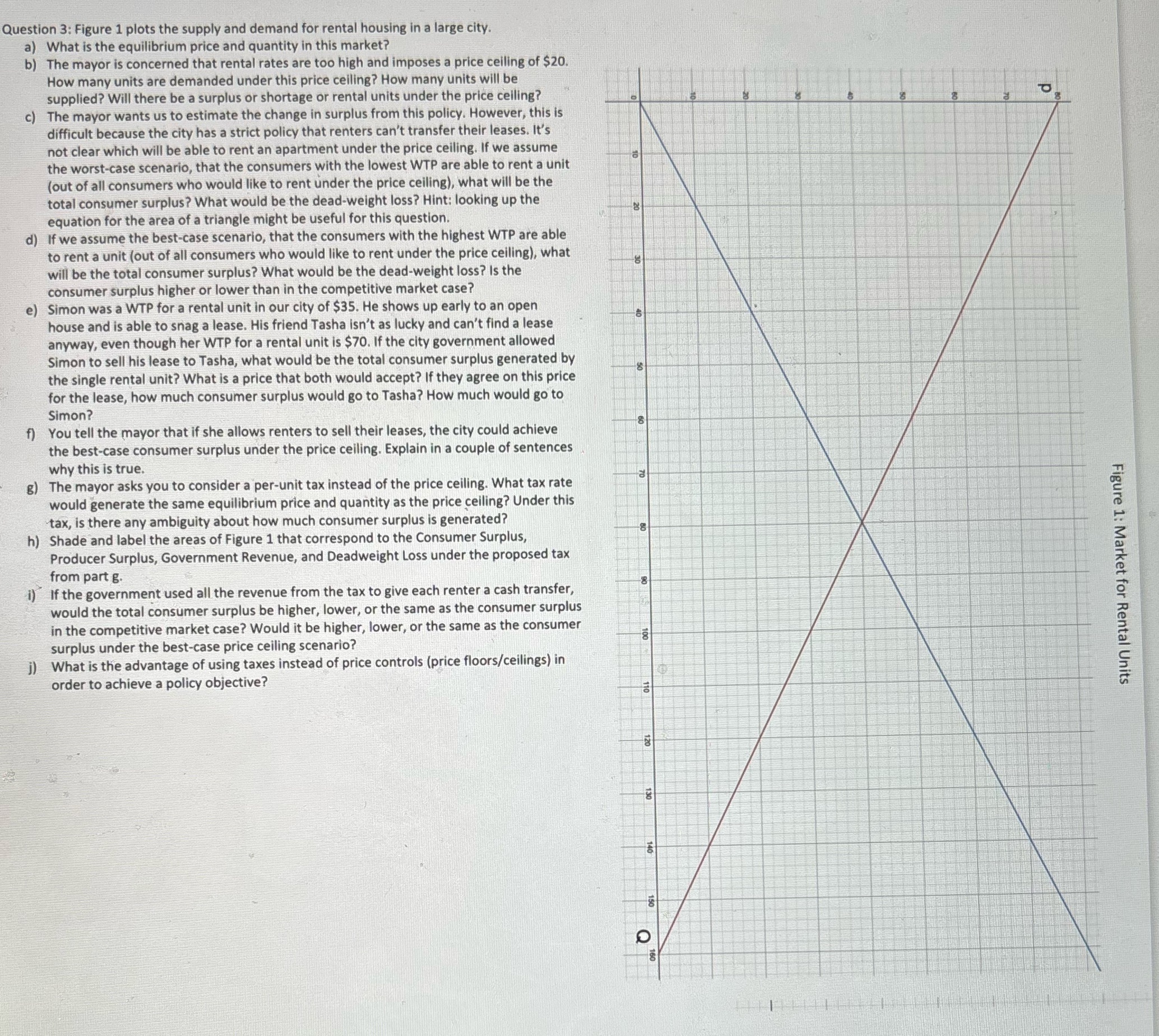Please answer these questions as soon as possible
Question 3: Figure 1 plots the supply and demand for rental housing in a large city. a) What is the equilibrium price and quantity in this market? b) The mayor is concerned that rental rates are too high and imposes a price ceiling of $20. How many units are demanded under this price ceiling? How many units will be supplied? Will there be a surplus or shortage or rental units under the price ceiling? c) The mayor wants us to estimate the change in surplus from this policy. However, this is difficult because the city has a strict policy that renters can't transfer their leases. It's not clear which will be able to rent an apartment under the price ceiling. If we assume the worst-case scenario, that the consumers with the lowest WTP are able to rent a unit (out of all consumers who would like to rent under the price ceiling), what will be the total consumer surplus? What would be the dead-weight loss? Hint: looking up the equation for the area of a triangle might be useful for this question. d) If we assume the best-case scenario, that the consumers with the highest WTP are able to rent a unit (out of all consumers who would like to rent under the price ceiling), what will be the total consumer surplus? What would be the dead-weight loss? Is the consumer surplus higher or lower than in the competitive market case? Simon was a WTP for a rental unit in our city of $35. He shows up early to an open house and is able to snag a lease. His friend Tasha isn't as lucky and can't find a lease anyway, even though her WTP for a rental unit is $70. If the city government allowed Simon to sell his lease to Tasha, what would be the total consumer surplus generated by the single rental unit? What is a price that both would accept? If they agree on this price for the lease, how much consumer surplus would go to Tasha? How much would go to Simon? ) You tell the mayor that if she allows renters to sell their leases, the city could achieve the best-case consumer surplus under the price ceiling. Explain in a couple of sentences why this is true. g) The mayor asks you to consider a per-unit tax instead of the price ceiling. What tax rate would generate the same equilibrium price and quantity as the price ceiling? Under this tax, is there any ambiguity about how much consumer surplus is generated? h) Shade and label the areas of Figure 1 that correspond to the Consumer Surplus, Producer Surplus, Government Revenue, and Deadweight Loss under the proposed tax from part g. Figure 1: Market for Rental Units i) If the government used all the revenue from the tax to give each renter a cash transfer, would the total consumer surplus be higher, lower, or the same as the consumer surplus in the competitive market case? Would it be higher, lower, or the same as the consumer surplus under the best-case price ceiling scenario? j) What is the advantage of using taxes instead of price controls (price floors/ceilings) in order to achieve a policy objective







